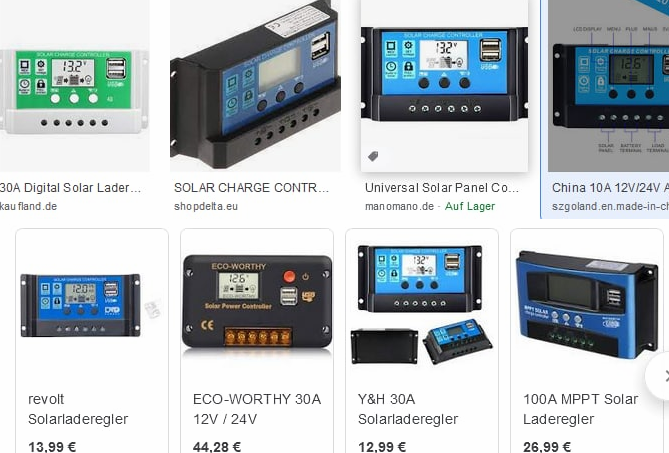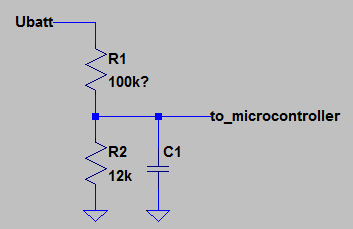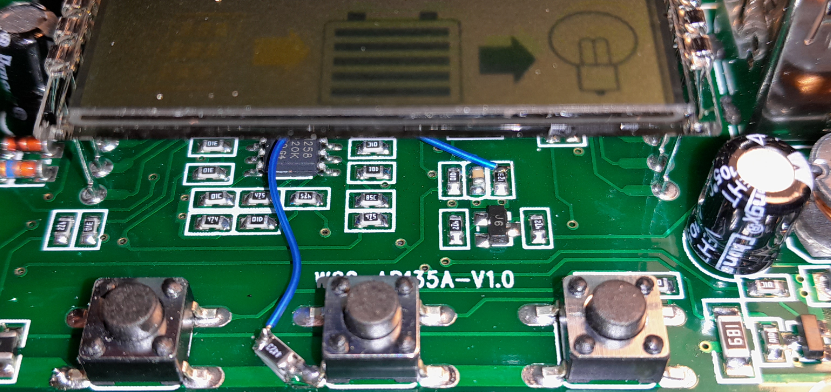

Home


|
Solar Charge Controller HackSorry, die deutsche Übersetzung folgt später... Recently I bought a cheap Chinese solar charge controller. It is available for less than 10 Euros (2022) in Germany: 
It seems that this device is produced in many variations, with different housings and buttons, but the display indicates that they all have much in common: 
Being a technician I tried to determine a few parameters of the unit. First the quiescent current. With approx. 11mA it was not good, but well, let's accept it. Surprisingly the 5V USB voltage is always present, even if the battery charge is low, so this explains at least the 11mA to some extent. However, the next measurement was shocking me. The measured battery voltage was 0.4V higher than the actual value. Here it was connected to a lab power supply: 
Opening the case and looking closer to the printed circuit board a microcontroller can be identified under the LCD. Assuming that it includes the analog-digital converter to measure the voltage and after measuring a controller supply of 3.3V, it was clear that somewhere a voltage divider must be on the board that reduces the battery voltage to some value between 0 and 3.3V. And indeed there is the typical circuit just below the microcontroller. The schematics look like this: 
Since the voltage displayed was too high, I decided to connect a spindle trimmer potentiometer in parallel to the lower resistor and tuned it until the right voltage was displayed. Then I measured the resistance which came out to be approx 370kOhms. That was the tuning assembly: 
Finally I searched a nice place on a ground trace to solder a stack of a 499k resistor in parallel to two 4.7MegOhm one which makes approx. the needed value. Because I did not want to solder too much below the glass of the display I used the blue cable for mounting the resistor at a place with more space around: 
Afterwards it works like a charm: 
I really do not understand why they sell such a thing that measures in such a wrong way. Maybe I just got a bad sample. At least 0.4V apart from the real value is not acceptable. Imagine a lead-acid battery that expects a maximum charge voltage to be cooked with 14.8 instead of 14.4V or if a low discharge goes 0.4V below a limit that was already at the a very low level. |
| © 2025 Alexander Mumm |